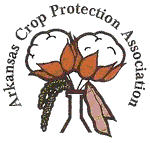Mason Castner won the PhD student competition with a presentation titled “Assessment of Residual Palmer amaranth Control with Soil-applied Herbicides in Dryland Systems.”. The presentation stated that Palmer amaranth has been regarded as one of the most troublesome weeds for Midsouth row crop producers for almost two decades, primarily due to the prolific nature of the weed and its tendency to evolve resistance to herbicides. One of the key proponents of reducing postemergence selection for weed resistance is use of soil-applied herbicides; however, the time it takes to receive moisture activation (0.5in) of the herbicide may limit effectiveness of the application. To evaluate the influence of incidence of activating rainfall on residual herbicide activity and overall performance (Balance Flexx ®, Dual Magnum ® , Ticor ® , Valor ® , XtendiMax ® , and Zidua ® ), five bareground experiments were conducted in 2021 and 2022, in Fayetteville, AR. Treatments were arranged as a single-factor (herbicide) randomized complete block design with four replications. In addition to visible weed control evaluations, a WatchDog ® weather station was placed in the field to monitor rainfall for the duration of each 28-day experiment. For most of the evaluated herbicides, a delayed activating rainfall reduced initial weed control over instances where immediate (within a few days) activation occurred. At 14 days after treatment (DAT), without adjusting for rainfall, box and whisker plots indicate that 4 out of 6 herbicides have minimal variation with comparable levels of Palmer amaranth control (above 85%). Greater variation in control was observed with Balance Flexx and XtendiMax, with data points as low as 50 and 40%, respectively. Trends in the results at 28 DAT were similar to 14 DAT, however; variation in control began to increase for all herbicides, which indicated the environment influenced the residual activity over time. Overall, rainfall soon after an XtendiMax application reduced performance, unlike the other herbicides evaluated. For most soil-applied herbicides, choosing the appropriate herbicide and timeliness of an activating irrigation event is imperative to optimize weed control.
 Noah Reed and Ty Smith are First Place Winners in the Masters Student Compe...
Noah Reed and Ty Smith are First Place Winners in the Masters Student Compe...